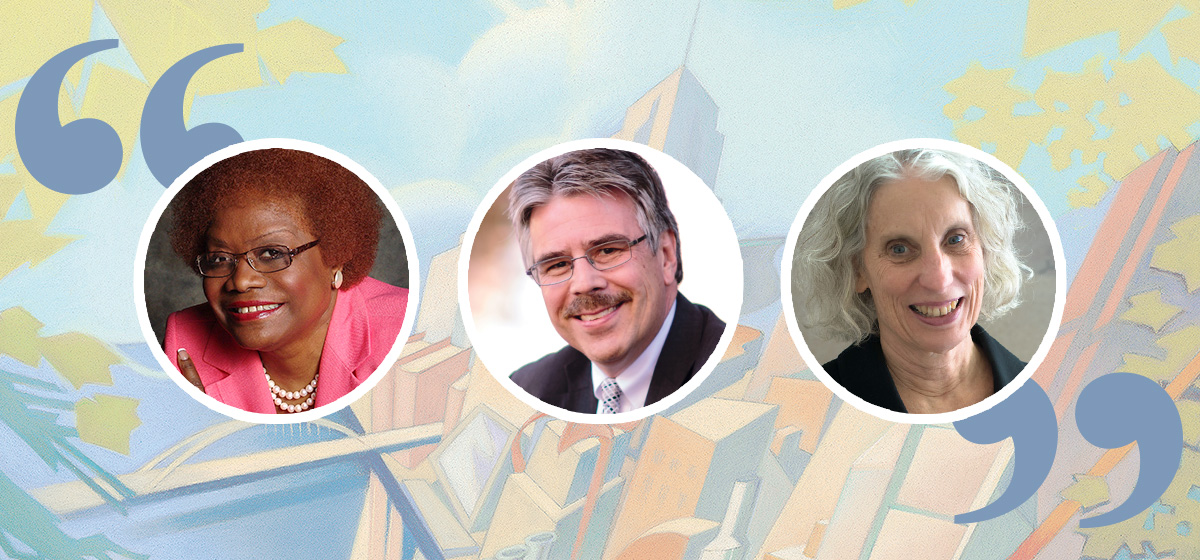Bold Action Needed: Esther L. Bush, Ken Gormley, Mary Frances Cooper

At a time when the Pittsburgh region is continuing to lose population and has been seeing regional job losses the past few months, we asked a group of regional leaders to respond, in 200 words or less, to this question: What action do we need to take to create the kind of growth, vitality and dynamism that will stem our population loss and catalyze a strong future?
Esther L. Bush—President and CEO, Urban League of Greater Pittsburgh
Too many of Pittsburgh’s African American residents face some of the nation’s most daunting conditions and consequences of those conditions. Just as the body cannot be well when parts are unhealthy, so Pittsburgh cannot thrive when nearly one-quarter of Pittsburgh residents are obstructed by poor health conditions, unsafe and inadequate housing, below standard educational opportunities, and the resulting low-income job options and high unemployment.
By uniting with regional leaders and fellow Pittsburghers from all walks of life to ensure healthy environments, decent and affordable housing, and educational excellence for all, employers have it within their means to develop a flourishing source of competent potential employees committed to our region.
Ken Gormley—President, Duquesne University
Metro areas like Pittsburgh that are sustaining reinvention and smart growth are those that invest in new workers and reward ventures connected to their region. Many of Pittsburgh’s strongest institutions have storied histories that define our place. What can we do to attract and retain the people in the professions and trades that will enrich Pittsburgh?
What if foundations, economic development organizations and other civic structures made place-based investment our top priority, building our existing businesses or investing in new ones with a preference for those that make our location critical to their plan? For instance, urban green industry is revitalizing vacant spaces to create new opportunities in Hazelwood, Braddock and other former steel mill sites that once built our region. The Carrie Furnaces site in Rankin is cultivating investment in a film and entertainment village centered around this riverfront space amid Pittsburgh’s rich history and iconic location.
As a practice, place-based impact investing already prioritizes the positive social and environmental stewardship so important to our region’s future. The best plans include all kinds of workers and residents, and they focus as much on sustainable communities as they do on a sustainable venture.
If the anchors of our region prioritize place-based impact investing, we can stem population loss and reap the benefits of businesses that foster enduring vitality in Pittsburgh.
Mary Frances Cooper—President and Director, Carnegie Library of Pittsburgh
Good jobs, good schools, affordability and social infrastructure are elements that attract people to a place and encourage them to stay. Pittsburgh is making efforts in these areas. It is not likely, however, that we will grow our community simply by encouraging people from within this country to relocate to here. The world is full of people who seek opportunity and want to create a good life for themselves and their families, and they could do this here in Pittsburgh. We have an infrastructure in place that can support immigrants, including the public library, which, throughout our 125-year history, has always helped newcomers as they seek to make their way in their new home and work toward citizenship. Indeed, the founder of our library, Andrew Carnegie, was himself an immigrant. He came to Pittsburgh as a child from Scotland, worked hard and strove to give back to his new community. We need to strengthen and enhance this infrastructure and build up our capacity to incorporate people from various countries and cultures into our community in a way that enables them to be true to their authentic selves while contributing to the growth, vitality and dynamism that is our future.





